

Metamask Wallet Review
Overall Rating
85 %
Metamask Basic Information
The MetaMask wallet is a hot non-custodial wallet that primarily supports Ethereum and EVM-compatible networks. Although it lacks support for other major blockchains, such as Bitcoin, XRP, Solana, and others, it still has relevance in the Web3 ecosystem. More precisely, you can buy, trade, and earn rewards on crypto and NFTs without storing your assets on centralized exchanges. Additionally, its dApp compatibility makes it perfect for DeFi and NFT trading.

Play Responsibly
Quick Summary: Is MetaMask Still Worth It in 2025?
In 2025, MetaMask is your go-to non-custodial wallet if you’re an Ethereum dApp user, NFT collector, or multi-chain DeFi user. It’s perfect for interacting with multiple EVM dApps, allowing you to store, buy, and trade from the same platform. If you’re interested in Bitcoin or other non-EVM networks, consider exploring different options.
The platform is consistently working on launching new updates, featuring significant UX improvements in 2025, including a redesigned home screen and enhanced asset management across multiple networks.
One of the most significant changes is the addition of Solana and Bitcoin support, enabling users to hold, send, and swap BTC and SOL tokens through the Snaps plugin system in MetaMask.
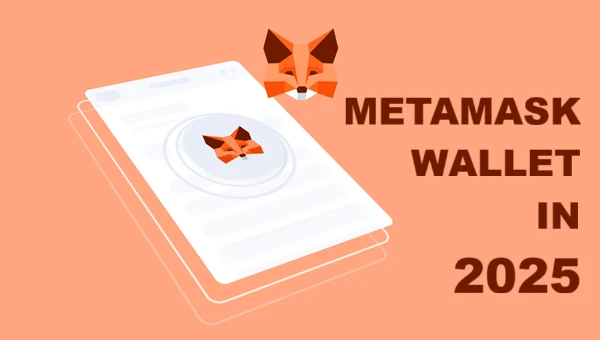
Here’s a brief overview of the most crucial aspects:
✔️ Straightforward UX:
MetaMask has an intuitive interface with a clean home screen for smooth multi-chain asset management.
✔️ Expanded integrations and support:
Despite the native ETH, ERC-20, and ERC-721 tokens support, MetaMask has extended its EVM networks (Polygon, Arbitrum, Optimism, BNB Chain).
✔️ Compatible with hardware wallets:
MetaMask is compatible with wallets like Trezor and Ledger for those who prefer cold storage for their assets.
✔️ Streamlined transactions:
The Gas Abstraction feature (or ‘pay-in-token’ functionality) allows you to pay the fees in tokens aside from ETH, which simplifies your transactions.
❌ High Swap Fees and Markups:
The MetaMask swap fees are around 0.875%, but you’ll also encounter in-app fiat transactions with a 1% markup and approximately a 15% staking cut on your rewards.
❌ Blockchain limitations:
There’s no native support for some of the biggest cryptocurrencies (for now), and you’ll need to add many non-EVM networks manually.
❌ Lack of Centralized Security Features:
As a non-custodial wallet, MetaMask lacks built-in two-factor authentication (2FA) and multi-signature (multisig) options, which must be managed by the user or through dApps.
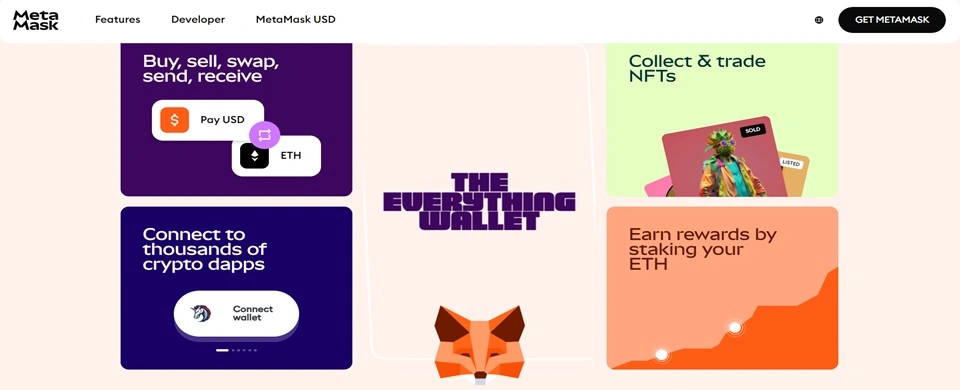
What Is MetaMask & How Does It Work?
Let’s focus on what MetaMask is and how it works, from a brief overview to the most significant features.
Key Features
MetaMask is a non-custodial crypto wallet and dApp browser. You can use it as both a web browser extension and a mobile app, which lets you interact with the Ethereum blockchain.
➡️ MetaMask browser extension is compatible with Chrome, Firefox, Brave, and Edge.
➡️ MetaMask mobile app is available for both iOS and Android users.
Thanks to the Ethereum and EVM-compatible chains support, you can send, receive, or swap ETH, ERC-20, or ERC-721 tokens; at the same time, you can also interact with Ethereum-based dApps.
Additionally, as a hot wallet, MetaMask enables you to use multiple blockchain features, including
- DeFi
- NFTs
- Play-to-Earn features
You can buy, sell, and trade NFTs with ease. You can even add new EVM-compatible networks, such as Harmony, Fantom, or Polygon, and hold all of your assets within the same platform, without switching between multiple apps.
Another prominent aspect of this wallet is that MetaMask has an open-source origin.
➡️ You can find the code publicly on GitHub, which makes it accessible to everyday ETH holders, DeFi users, and NFT collectors.
➡️ You can audit, contribute, and even build on it; this community development approach strengthens MetaMask’s transparency and security.
MetaMask in the Web3 Ecosystem

Over the years, MetaMask has become an essential Web3 wallet, simplifying numerous activities in the ecosystem.
Although it initially started as a simple Ethereum wallet, you can now utilize it for DeFi activities. More precisely, you can connect directly to third-party protocols, such as Uniswap, Compound, and Aave, and lend, stake, or swap assets.
However, MetaMask plays a significant role in the NFT space, where you can connect to marketplaces like OpenSea or Looksrare to mint, trade, and manage your collection. On top of this, it’s also crucial in DAO governance because you can vote on various proposals through platforms like Snapshot and Aragon.
All of this contributes to its wide adoption, which is why over 30 million users show high trust in its usability and security.
Since 2016, MetaMask has continually grown.
One of the most recent innovations is the Snaps plugin system, which supports non-EVM chains such as Solana and Bitcoin, making it suitable for a wide range of crypto enthusiasts.
Who Owns and Maintains MetaMask?
MetaMask is developed and owned by ConsenSys. This is an Ethereum-aligned company founded by Joseph Lubin, one of the co-founders of Ethereum. Lubin founded ConsenSys in 2015, aiming to build decentralized software tools and infrastructure for a more open and secure Ethereum-based ecosystem.
Nowadays, the company’s mission states, “Inspire and empower the builder in everyone.” Considering how ConsenSys and MetaMask have grown into major players in the Web3 ecosystem, this mission is something they really value and implement in their day-to-day activities.
ConsenSys has completed several funding rounds, securing approximately $725 million in total capital. Notable investors include Microsoft, HSBC, SoftBank, ParaFi Capital, Temasek, Coinbase Ventures, and Third Point. Based on these funding rounds, the company’s estimated valuation ranges from $3 billion to $7 billion.
Concerns regarding MetaMask’s security arose when the wallet was relicensed. Originally, it operated under an open-source MIT license in 2016, but in 2020, it was relicensed under a custom proprietary license.
Some users have expressed concerns about their privacy due to recent changes. Their worries are linked to the default use of Infura, which is owned by ConsenSys and automatically collects users’ IP addresses. Additionally, users are apprehensive about the collection of their wallet addresses during transactions.
Luckily, MetaMask is a huge open-source project, publicly available on GitHub, meaning it’s open for developer contributions, code audits, and any other requests. As a result, the community plays a crucial role in contributing new features, fixing bugs, and enhancing security.
MetaMask Wallet Setup: Step-by-Step Guide
Now that you know the general information about this crypto wallet, it’s time to learn how to use MetaMask. That’s why we’ve prepared step-by-step guides that will break down the overall process.
Installation
You can download the mobile app for iOS and Android, and/or as a browser extension. However, the most important thing is to verify you’re using the official source and not falling for phishing scams. Always go to the official source – not some third-party sources.
1. To get the MetaMask browser extension, follow these steps:
Step 1: Visit https://metamask.io/download/
Step 2: Select your platform.
Step 3: Download the extension.
Step 4: Make sure it’s enabled.
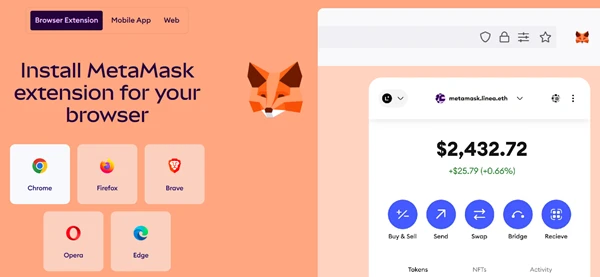
2. To use the MetaMask app on mobile, follow these steps:
Step 1: Visit https://metamask.io/download/
Step 2: Click Mobile App from the menu
Step 3: Choose between iOS, Android, and MetaMask APK*
Step 4: Follow the prompts to download your wallet
*To make things easier and avoid installing the wrong app, the MetaMask Wallet provided QR codes for iOS, Android, and the MetaMask APK.
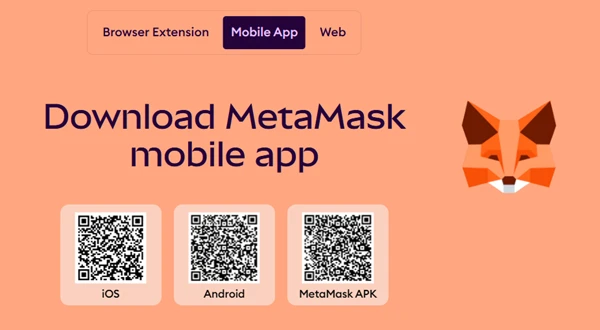
⚠️ Warning:
Avoid cloned versions programmed to record your Secret Recovery Phrase. Do not download MetaMask from unofficial sources!
Creating a Wallet
To create a new wallet, you need to:
- Open the MetaMask app or click the Fox icon in your browser, and click on “Get Started.”
- Select “Create a Wallet” to set up a new version.
- Create a secure password to encrypt your wallet locally.
- Write down the seed phrase and store it in a secure, offline location.
*The app generates your 12-word recovery phrase (seed phrase) upon setup.
💡 For a higher level of security, connect your MetaMask wallet to a hardware device like Ledger or Trezor. This way, you can enjoy the convenience of a hot wallet while still benefiting from the security of cold storage.
You’ll enjoy slightly more robust security if you create a wallet on your mobile, as you’ll be able to use biometric login, such as fingerprint or Face ID authorization, to access your assets.
Importing an Existing Wallet
The setup is even more straightforward if you already have a wallet and you want to import it to MetaMask. You can do this by using your seed phrase or private key.
During the MetaMask setup, choose the importing option. If you use the 12-word recovery phrase, enter it currently and set a new password. However, you can also use your private key, which is more suitable for importing a single address, not the entire structure of your existing wallet.
Regardless of the approach you decide to go for, it’s crucial to remember:
- Not to share your recovery phrase
- Beware of fake apps
Overall, users often migrate to MetaMask due to its dApp integrations, support for ETH and EVM-compatible chains, and extra features like hardware wallet compatibility or the MetaMask Snaps. All of this makes MetaMask great for additional flexibility and convenience, while maintaining your security.
Supported Chains & Tokens
The MetaMask wallet initially served as a platform for storing Ethereum tokens. However, it has now evolved into a trusted DeFi wallet that supports a wider range of chains and tokens. In this section, we will explore these developments in more detail.

Default Ethereum Support
Ethereum is natively supported; however, MetaMask also supports all ERC-20 tokens, such as Tether, Shiba Inu, Uniswap, and Chainlink. Additionally, you can also store other Ethereum-based coins, including ERC-777 and ERC-721 tokens. All you need is a suitable ETH address.
Adding Networks: Polygon, BSC, Arbitrum, etc.
In addition to native integrations, MetaMask offers connections to other EVM-compatible networks, either via Chainlist (a trusted third-party app) or by manually entering custom remote procedure call (RPC) configurations.
To add networks, like Polygon, BSC, or Arbitrum via Chainlist, you should:
- Visit the official Chainlist site while being logged into MetaMask.
- Connect your wallet.
- Find your preferred network.
- Click “Add to MetaMask.”
However, if you want to take things into your own hands, then you need to:
- Obtain the network chain credentials (network name, chain ID, RPC URL, and currency symbol).
- Copy them.
- Paste the project’s contract address.
However, you need to keep in mind that MetaMask doesn’t automatically connect to dApps as soon as you load the page. Instead, it requires you to initiate the connection, usually via a prompt when you try to connect to the dApp. The only time you can encounter auto-connection is for specific cases like Snaps.
The most-used chains that MetaMask supports include:
- Polygon
- BNB Chain
- Optimism
- Arbitrum
- Avalanche
- Linea
- Base
Limitations
The only thing where MetaMask falls short in terms of token support is the lack of native support for Bitcoin, Solana, or Cosmos chains. However, it does work with wrapped versions of the tokens, such as the wBTC.
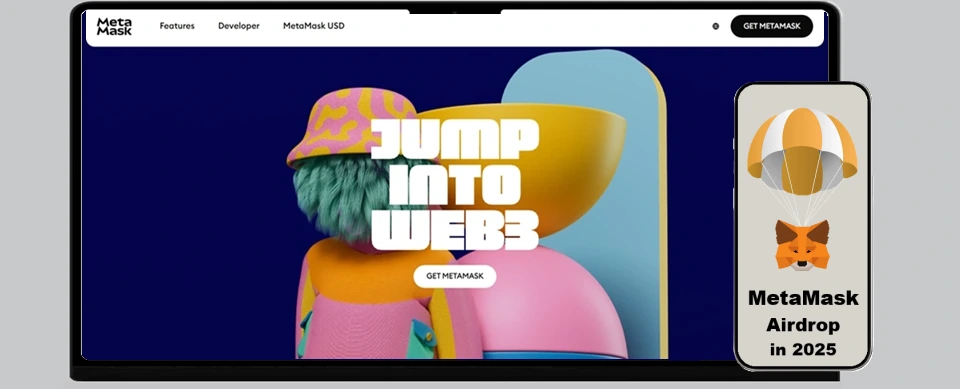
Will There Be a MetaMask Token Airdrop in 2025?
There have been speculations about a MetaMask token ($MASK) airdrop for years. The first hints appeared in 2021, and by 2022, Joe Lubin confirmed his plans to eventually launch a token and decentralize many of the MetaMask governance aspects.
Although there hasn’t been any official announcement or timeline, the community interest has arisen again at the beginning of 2025, after MetaMask started working on its ongoing infrastructure developments.
Some of the clues that point to a potential token airdrop include the integration of tools like the Daylight API, which helps you identify airdrop eligibility from third-party dApps, and continued emphasis on wallet usage incentives.
However, if you want to “farm” a potential airdrop, then it’s best to engage naturally with MetaMask’s ecosystem. You can do this by:
- Using the in-app swap feature regularly across various networks (Ethereum, Polygon, Arbitrum).
- Staking tokens through partners like Lido.
- Bridging assets between chains.
- Experimenting with MetaMask Snaps plugins.
Other things that can enhance the eligibility are active participation in dApps, like OpenSea and Uniswap, along with DAO voting platforms.
Other factors are:
- The wallet age
- Consistent on-chain activity
- Multi-chain usage
However, you must proceed carefully, as MetaMask constantly warns users about fake token claims and phishing attempts that use the $MASK name.
Each of these actions can improve the odds of an airdrop occurring, but there’s still no guarantee whether it will actually happen. Currently, there’s no official snapshot, eligibility criteria, or any date that ConsenSys has confirmed. So, you can treat the rumours as a way to deepen your engagement with the wallet, not as a sure reward.
Real User Experience – Interface, Performance & Support
In the section below, we’ve covered all the essential factors, such as interface, performance, and support. All of which directly impact your crypto journey.
1. Desktop & Mobile UI
MetaMask offers a relatively clean and intuitive interface on both the mobile app and browser extension, especially if you’re familiar with Ethereum and its compatible chains. With all of the recent updates, MetaMask has significantly improved the portfolio overview.
- You can now seamlessly access token balances, transaction history, and basic performance charts.
While the navigation is smooth, it’s still more technical when compared to competitors like Trust Wallet or Coinbase Wallet. This is because features like custom RPCs and gas controls require manual input.
It also supports NFT display on both mobile and browser, but this can come with occasional lag, particularly if you’re checking out less common collections. However, one of the things that we liked the most was the wallet switching feature, which allows you to manage multiple accounts or import wallets with ease.
2. Accessibility & UX for Non-Tech Users
Generally speaking, MetaMask is a user-friendly wallet for crypto-savvy users. This means that it can feel a bit overwhelming to beginners. The main reason is that the onboarding is less streamlined than that of some of its competitors, such as Phantom or Trust Wallet. These wallers offer more guided and mobile-first setups.
When it comes to language support, you can expect over 30 languages, including English, Spanish, Chinese, French, German, Russian, Japanese, Korean, and Turkish. While this makes it accessible to a global audience, some UI elements may remain untranslated.
3. Performance
When it comes to performance, you can expect smooth responsiveness and reliable extension stability across major browsers, like Chrome, Firefox, and Brave. Most users claim that they experience fast load times and quick dApp connections.
Still, there might be some sync issues, usually when you try to switch between networks or restore a wallet. This results in delays in balance updates or token visibility. Also, MetaMask may show delays when submitting transactions during high-congestion periods.
4. Support Options
You can reach the MetaMask customer support via multiple channels, including email, social media, and community forums like Reddit.
Additionally, you can contact its team by sending an email or submitting a ticket on the official website. However, the response time can be a potential drawback, as the team may take up to a few hours to find a solution to your issue.
Also, there’s a lack of live chat and phone support if you prefer getting an answer immediately.
For smaller issues, you can always visit the help center, where you can find troubleshooting guides about the MetaMask setup, token swaps, transactions, security, custom networks, and a lot more.
Despite this, and in addition to the available support channels, MetaMask also has public repositories on GitHub. This contributes to all the bugs, feature ideas, and other updates being handled transparently via GitHub.
Additionally, the MetaMask active social media presence allows you to contact the team for any assistance. From what we’ve seen, the support team promptly responds to any issues that are raised on social media, like Reddit and X (formerly Twitter).
Ultimately, you can check out the community forums on their official website as a resource for getting any help related to your MetaMask wallet.
5. Common Issues and How to Solve Them
Some of the most common issues you can encounter when using MetaMask are stuck transactions, gas miscalculations, and RPC errors. Luckily, you can solve all of them easily by retrying, entering RPC manually, and using some of the troubleshooting resources, where you can find more in-depth explanations.
Pros and Cons of MetaMask
While MetaMask is one of the best wallets on the market, there are still some good and not-so-good sides. So, let’s go through the MetaMask pros and cons and get a brief overview of it.
-
Pros
-
 Provides all the essential on-chain features: MetaMask allows you to swap tokens, bridge, stake, track your portfolio, or simply store your assets in a single place, without using multiple platforms.
Provides all the essential on-chain features: MetaMask allows you to swap tokens, bridge, stake, track your portfolio, or simply store your assets in a single place, without using multiple platforms. -
 Extensive compatibility with dApps: You can connect to numerous dApps in the Ethereum ecosystem, which makes MetaMask ideal for NFTs, DeFi, and DAOs.
Extensive compatibility with dApps: You can connect to numerous dApps in the Ethereum ecosystem, which makes MetaMask ideal for NFTs, DeFi, and DAOs. -
 High customizability: MetaMask lets you add custom RPCs, install Snaps for smoother functionality, and even tailor the wallet to align with your workflow.
High customizability: MetaMask lets you add custom RPCs, install Snaps for smoother functionality, and even tailor the wallet to align with your workflow. -
 Improved user experience: Due to the changes in the UI and UX, MetaMask is coming closer to modern standards and more streamlined usability.
Improved user experience: Due to the changes in the UI and UX, MetaMask is coming closer to modern standards and more streamlined usability. -
 Ideal for Ethereum holders: MetaMask is supported by numerous Ethereum and EVM-compatible networks, such as OpenSea, Aave, and Uniswap.
Ideal for Ethereum holders: MetaMask is supported by numerous Ethereum and EVM-compatible networks, such as OpenSea, Aave, and Uniswap. -
 Non-custodial wallet: You’re in total control over your private keys and assets, meaning you own them, manage them, and there’s no third-party interference.
Non-custodial wallet: You’re in total control over your private keys and assets, meaning you own them, manage them, and there’s no third-party interference.
-
Cons
-
 High swap fees: MetaMask’s swap feature will charge you a 0.875% fee, which is much higher than the fees of other wallets and decentralized exchanges.
High swap fees: MetaMask’s swap feature will charge you a 0.875% fee, which is much higher than the fees of other wallets and decentralized exchanges. -
 Lack of two-factor authentication: As there’s no available 2FA, there are many security concerns about the privacy of users’ assets.
Lack of two-factor authentication: As there’s no available 2FA, there are many security concerns about the privacy of users’ assets. -
 No live chat support: MetaMask doesn’t come with live chat or phone support, and even the email responses can take a while.
No live chat support: MetaMask doesn’t come with live chat or phone support, and even the email responses can take a while. -
 Occasional lags: You can experience potential delays in your transactions or token swapping, especially in periods when the ETH network is more congested than usual.
Occasional lags: You can experience potential delays in your transactions or token swapping, especially in periods when the ETH network is more congested than usual. -
 A bit complex for beginners: The manual adding of networks and RPC settings may be complicated for crypto rookies.
A bit complex for beginners: The manual adding of networks and RPC settings may be complicated for crypto rookies.
Privacy, Security & Custody
A lot of crypto holders ask themselves, “Is MetaMask safe?” Well, it’s now time to reveal this once and for all. Overall, MetaMask is a pretty safe option, especially due to its non-custodial nature. However, there are still some privacy concerns. So, let’s discuss this in more detail.
1. Private Key Management
As we already mentioned, MetaMask is a self-custody wallet, meaning that you’re the only owner and guardian of your private keys. As a result, you have full control over sending, receiving, and storing cryptocurrencies.
You also have a responsibility to keep your keys and seed phrase safe. If you lose them and don’t have access to the wallet, no one can recover your funds but you. Due to this, it’s crucial to keep your 12-word recovery phrase somewhere safe, not on the internet.
2. Security Features
MetaMask comes with a pretty wide range of security features, which make it perfectly safe. More precisely, the wallet implements all the traditional security steps, so you can access it.
- You need a password for both the mobile app and the browser extension.
It’s best to create a complex yet easy-to-remember password. But the best part is that this credential only works on the device on which you install MetaMask. This means that you can’t use the same password if you install it on another device, which significantly enhances your safety.
- The MetaMask mobile app lets you set a PIN or biometrics, such as fingerprint or facial recognition, for an additional layer of security.
But MetaMask takes things a step further, allowing you to integrate your hardware wallets, like Ledger and Trezor, and enjoy extra safety while still being connected to dApps. As hardware wallets don’t store your assets online, you prevent any potential cyberattacks.
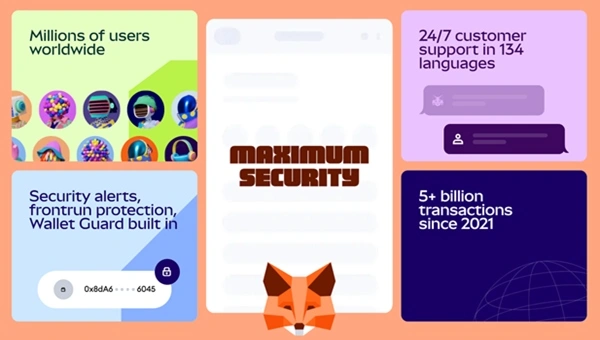
This crypto wallet comes with a few other built-in security features, such as:
- Time-out locks: If you’re inactive for a while, MetaMask will automatically lock your wallet and require you to enter your password so you can access it again. This prevents any unauthorized access in case you lose your device or leave it unattended.
- Phishing warnings: MetaMask also has phishing warnings, which let you know if you visit a scam website or interact with a suspicious dApp. This is possible due to the usage of blocklists and integrations with security partners.
- Scam token detection: The wallet also flags suspicious tokens, usually those with suspicious contract behavior or unverified sources. As a result, it helps you avoid fake or malicious assets that might compromise your overall safety.
3. Bug Bounty Program
Another thing that adds to the MetaMask security is the public Bug Bounty program, which is available on HackerOne. More precisely, security researchers can report any vulnerabilities in the browser extension, app, or backend infrastructure.
This program basically rewards users for their responsible disclosure. The reward doesn’t have a fixed cap, but it depends on the severity of the finding.
4. Privacy Considerations
Unfortunately, users have some privacy considerations regarding MetaMask, mainly because of its default use of Infura. This is an RPC provider, also owned by ConsenSys, which may log IP and wallet addresses without your consent.
To calm all the fuss, MetaMask issues a public statement, in which it clarifies that you can manually configure the RPC endpoints. Thus, you’ll be able to route the traffic through third-party or self-hosted nodes to limit any potential tracking.
Still, the MetaMask community has criticisms about the lack of opt-in telemetry policies and bundling analytics features. They consider them contradictory to the decentralization principles.
5. Known Exploits or Incidents
Over the years of operation, MetaMask has faced a few security incidents. One of them was the iCloud seed Phrase leak via phishing attack in 2022, which cost a user more than $655,000. The hackers accessed their iCloud backup, which had the encrypted MetaMask vault.
A more recent incident was the increase in wallet attacks. During this period, cybercriminals hacked around 500 wallets nearly every day, usually via malicious browser extensions and compromised dApps.
6. Is MetaMask Regulated or Licensed?
MetaMask is not a licensed financial entity and operates as a non-custodial wallet. In other words, you’re in full control of your keys, which is not the case with traditional financial regulations.
Unlike custodial wallets like Coinbase, MetaMask doesn’t hold your funds or provide centralized recovery, limiting its regulatory exposure. However, global crypto regulations have started to tighten, which makes it possible for MetaMask to face regulation under MiCA or evolving US policy.
What’s interesting is that in 2024, ConsenSys filed a lawsuit against the US SEC to prevent any regulations. Still, regulations might bring greater transparency and more trust among MetaMask users. However, this can also implement KYC processes and limit the wallet’s availability in some regions.
Fees & MetaMask Swaps
One of the most significant drawbacks is MetaMask’s higher fees. So, let’s find out more about its fees and swaps, and see what affects the price.
Gas Fees
Among MetaMask’s strong aspects is the gas fee customization. You can adjust the gas limit and priority fee or choose from preset options, like low, market, and aggressive. These settings determine the speed of the confirmation of your transactions, as well as how much you’ll pay.
Keep in mind that when the Ethereum network is congested, the gas fees can spike, which leads to delays or even failed transactions if you’ve set the fee limit too low.
To save on fees, you can consider:
- Using Layer 2 networks like Arbitrum and Optimism, as they offer the same Ethereum-compatible dApps, but with much lower gas costs.
- Submit transactions during off-peak hours, like at night or on the weekends.
- Bundling your actions, such as swapping multiple tokens at once or bridging in larger batches. This will significantly reduce paying multiple fees.
MetaMask Swap Fees
MetaMask also comes with a built-in swap feature, which works as a DEX aggregator, and it sources token prices from different DEXs, such as Uniswap, so you can find the best available rates.
While this brings a lot of convenience, as you can swap tokens directly in the MetaMask wallet, it also brings along the service fee of 0.875% on each swap.
While you always have the chance to use a native DEX directly and avoid such a fee, you’ll need to complete more steps. Unfortunately, this comes with a higher risk of failed transactions.
In comparison, MetaMask’s swap feature has a lot of benefits, such as optimized routing, reduced slippage, and MEV protection (which prevents price manipulation by bots). This is great for crypto rookies or users who simply prioritize simplicity and safety.
MetaMask Alternatives Compared
If what you’ve read above doesn’t fulfill your preferences, you can always check out some of MetaMask’s alternatives. But to make your final decision even easier, we’ve prepared a few comparisons with the best alternative wallets.
MetaMask vs. Coinbase Wallet
If you put MetaMask and Coinbase side by side, you’ll immediately notice that MetaMask has more integrations with ETH dApps, supports custom EVM networks, and gives you full control over your private keys and assets.
On the other hand, the Coinbase wallet is better for beginners due to its smoother onboarding experience, built-in fiat ramps, and strong ties to the Coinbase exchange.
While MetaMask supports more chain customization and decentralization, Coinbase Wallet provides you with a lot more convenience with centralized features, including cloud backups and account recovery.
MetaMask vs. Phantom
At first sight, MetaMask is better for Ethereum and EVM chains. But if you want a bigger variety, then consider using Phantom, which is perfect for Solana and has a slicker NFT UI.
- MetaMask supports hardware wallets, which is one of Phantom’s limitations. Still, Phantom stands out due to its user-friendly interface.
- In terms of fees, both wallets are non-custodial, but MetaMask still has a high swap fee, while Phantom doesn’t have any additional swapping charges.
MetaMask vs. Trust Wallet
While MetaMask’s support for EVM is unparalleled, Trust Wallet has a broader chain support, allowing you to store, trade, and swap tokens like Bitcoin, Solana, and XRP.
Also, Trust Wallet has a better mobile-first experience, making its app more convenient for beginners, while MetaMask is better for advanced users.
| MetaMask | Support: ETH, plus EVM chains (Polygon, Arbitrum, Optimism, etc.) | Swap Fees: 0.875% | Compatible with Hardware Wallet: Yes | User Interface: Robust tech features, but a bit complex for beginners | Open-Source Status: Fully open-source | Community Reputation: Trusted by DeFi and NFT users; some privacy concerns regarding Infura |
| Coinbase | Support: ETH, EVM chains, plus native support for tokens like BTC and SOL | Swap Fees: None | Compatible with Hardware Wallet: Yes | User Interface: Beginner-friendly, smooth onboarding, mobile-first | Open-Source Status: Partially open-source | Community Reputation: Highly trusted |
| Phantom | Support: Solana and Solana-compatible chains | Swap Fees: None | Compatible with Hardware Wallet: Yes | User Interface: Sleek and simple interface | Open-Source Status: Fully open-source | Community Reputation: High trust from Solana holders |
| Trust | Support: +100 blockchains, including Ethereum, Solana, Ripple, and Tron | Swap Fees: None | Compatible with Hardware Wallet: Yes | User Interface: Suitable for beginners, mobile-first | Open-Source Status: Fully open-source | Community Reputation: Trusted for multi-chain activities; some concerns regarding centralized features |
MetaMask for Developers

All of the MetaMask functionalities and integrations make it perfect for developers. However, if you’re a developer who wants to build ETH and EVM-based dApps, then you can use the wallet’s robust JavaScript API.
More precisely, MetaMask has integrated the Ethereum provider into the browser, which lets developers easily request wallet connections, sign transactions, and even interact with smart contracts. Plus, the Web3 libraries, like ethers.js or web3.js, simplify wallet authentication, enabling dApps to securely verify user identities and support on-chain actions.
We already mentioned it a few times, but the MetaMask Snaps innovation lets developers extend the wallet’s main functionality by developing custom plugins. In fact, Snaps provide support for additional blockchains, such as Bitcoin, privacy tools like zero-knowledge proofs, or specialized features without requiring a full wallet fork.
With all of this in mind, some of the most popular developer use cases include NFT minting platforms, DAO voting systems, and wallet-based authentication.
Last but not least, developers can access the MetaMask open-source code, report issues, or contribute to any improvements via the GitHub repository. Plus, the official MetaMask docs site contains all developer guides and API references, allowing you to find everything you need to get started.
Reddit & Community Feedback
Aside from our expert recommendations, we always focus on user-based feedback. That’s why we read through numerous user reviews on multiple community forums, such as Reddit.
Here’s what we learned:
- Some of the biggest concerns about MetaMask refer to the high swap fees, lack of support, and scam token visibility.
One user said: “Also, for me, the least logical part is why they ask people to take care of their crypto security when most of the population doesn’t have a clue how to protect their data or private key.”
Another one shared: “As a one time meta mask user who was trying to “learn as they go” I found it quite cumbersome and required a ton of investigation to actually use.”
- But, on the other hand, many users praise its open-source, multi-chain support, and familiar UX.
There are even users who say: “Yes. I really do like meta mask. It beats every other wallet that I have used so far.”
“Metamask is a great tool. It has gotten me out of quite a few binds in regards to odd cryptocurrencies or projects that pop up. That’s a great thing. It also works with many hardware wallets. Which is another great thing.”
Usage Stats & Community Sentiment
- MetaMask has had 30+ million monthly active users since the beginning of 2024, which is a growth of 19 million in September 2023 to over 30 million by January 2024.
- Around 40% of MetaMask usage is on mobile devices, showing cross-platform adoption.
- Dune Analytics shows that MetaMask processes millions of in-wallet swaps each month via its own embedded swap router.
User Sentiment Trend Over Time
- The interest in MetaMask was relatively steady from 2021 to the beginning of 2024. The more widespread adoption started with the adoption of DeFi.
- The search volume regarding discussions about privacy concerns spiked in mid-2024. This is linked to Infura data collection and the licensing changes.
- The start of 2025 was marked by potential search increases about MetaMask. Mainly due to the wallet-related phishing attacks and the developer updates, such as the launch of Snaps.
MetaMask Roadmap and Future Outlook
Currently, the MetaMask roadmap focuses on improving user experience, multichain functionality, and privacy. With this, the wallet is becoming more versatile and suitable for casual crypto holders, not just experienced whales.
One thing that’s worth mentioning is the development of the MetaMask Snaps, which enables support for non-EVM chains, such as Bitcoin and Solana. This also contributed to the launch of custom plugins and more robust privacy tools.
Aside from this, MetaMask seems to plan to implement programmable accounts via EIP-7702, which will enable smart features such as multi-signature approvals, delegated permissions, and built-in recovery.
Furthermore, the wallet is working on gas abstraction through ERC-5792, so users can pay their fees in tokens other than ETH.
Of course, MetaMask doesn’t forget about simplifying its interface, which is why it’s also working on a redesigned multichain view, which will enable you to track all your assets from the same platform, sync profiles across devices, and manage more than one seed phrase.
Each of these updates will bring huge improvements. More precisely, newbies enjoy seamless onboarding and fewer technical issues. On the other hand, DeFi users will take advantage of streamlined swaps, lower fees on Layer 2, and smart predictions of transactions. NFT collectors will be able to manage both SOL and ETH-based NFTs at the same time.
Unfortunately, the biggest challenge for MetaMask still remains the 0.875% swap fee, occasional UI clutter, and performance issues during peak hours.
But regardless of all this, MetaMask is indeed becoming a powerful multichain gateway for new and experienced crypto enthusiasts, slowly changing the future of Web3 and self-custodial wallets.
Who Should Use MetaMask?
MetaMask is ideal for Ethereum holders, DeFi power users, ETH NFT collectors, developers, and airdrop hunters. However, it might not be the most suitable for Bitcoin maximalists or users needing full anonymity or phone support.
When it comes to the ideal profile type, MetaMask is currently better for advanced users, due to its robust technicalities.
Based on what we’ve learned while doing this in-depth MetaMask wallet review, we can say that:
- If you want Bitcoin, MetaMask is not ideal.
- If you interact with DeFi and NFTs on Ethereum or L2s, MetaMask is best.
- If you prefer mobile-first UX with broader support, Trust Wallet may suit you more.
- If you’re focused on Solana NFTs or chains, Phantom is the better pick.
- If you’re looking for fiat on-ramps, consider Coinbase Wallet.
Final Verdict – Is MetaMask the Right Wallet for You?
In summary, MetaMask is the undisputed gateway to the EVM and L2 ecosystem.
This wallet is the leading EVM choice among crypto wallets in 2025, especially if you’re looking for dApp access and multi-chain tools. Its biggest strengths are deep DeFi platform integrations, NFT marketplaces, and DAO governance tools. Thus, you gain flexible access to the Web3 ecosystem.
With the latest improvements, MetaMask has expanded its support even for non-EVM chains, like SOL and BTC, and you can even customize gas fees.
On the other hand, the high swap fee can be a drawback for frequent traders, and the interface can be a bit overwhelming for beginners. Compared to other reliable wallets, like Trust Wallet, Phantom, and Coinbase, MetaMask definitely falls short in terms of supported chains and beginner friendliness.
Frequently Asked Questions
Is MetaMask safe?
Yes, MetaMask is safe. Aside from being non-custodial and having an open-source code that lets anyone audit its security, MetaMask also implements password login, biometrics, and a Bug Bounty program.
Can I use MetaMask on mobile?
Yes, you can use MetaMask on mobile. All you have to do is download the app and create a wallet.
Does MetaMask support Bitcoin?
With the Snaps feature, MetaMask now lets you add non-EVM chains, meaning it supports Bitcoin. Still, there’s no native support for this coin.
What happens if I lose my seed phrase?
Unfortunately, if you lose your seed phrase, you can’t recover your wallet. This is because you’re in total control over it, and MetaMask has nothing to do with how you store it.
Can I connect MetaMask to OpenSea?
Yes, you can connect MetaMask to OpenSea. Thus, you can buy, sell, and manage NFTs on the platform.
Why do swaps cost so much on MetaMask?
The main reason for the high swap costs is the network congestion. Therefore, you may avoid it by trying to proceed with a transaction during lower-traffic periods.
How do I add a new network?
You can add a new network using Chainlist by selecting your preferred network or manually using RPC.
How is MetaMask different from a hardware wallet?
MetaMask is a hot wallet that you can use online. On the other hand, hardware wallets are physical devices that store your keys and seed phrase offline.
What is MetaMask Snaps?
MetaMask Snaps is an open-source system that lets developers extend MetaMask’s functionality by adding non-EVM chains or creating custom APIs for dApps
Can I use MetaMask on Arbitrum or zkSync?
Yes, you can use MetaMask on Arbitrum or zkSync. You only need to add the specific network details to your wallet in order to connect.
He started writing content online for various reasons, including accessing a community of music lovers. He began writing 2011 music reviews and PR releases for electronic music releases before shifting my focus to more crypto-oriented content after getting heavily involved with blockchain technology in 2013.

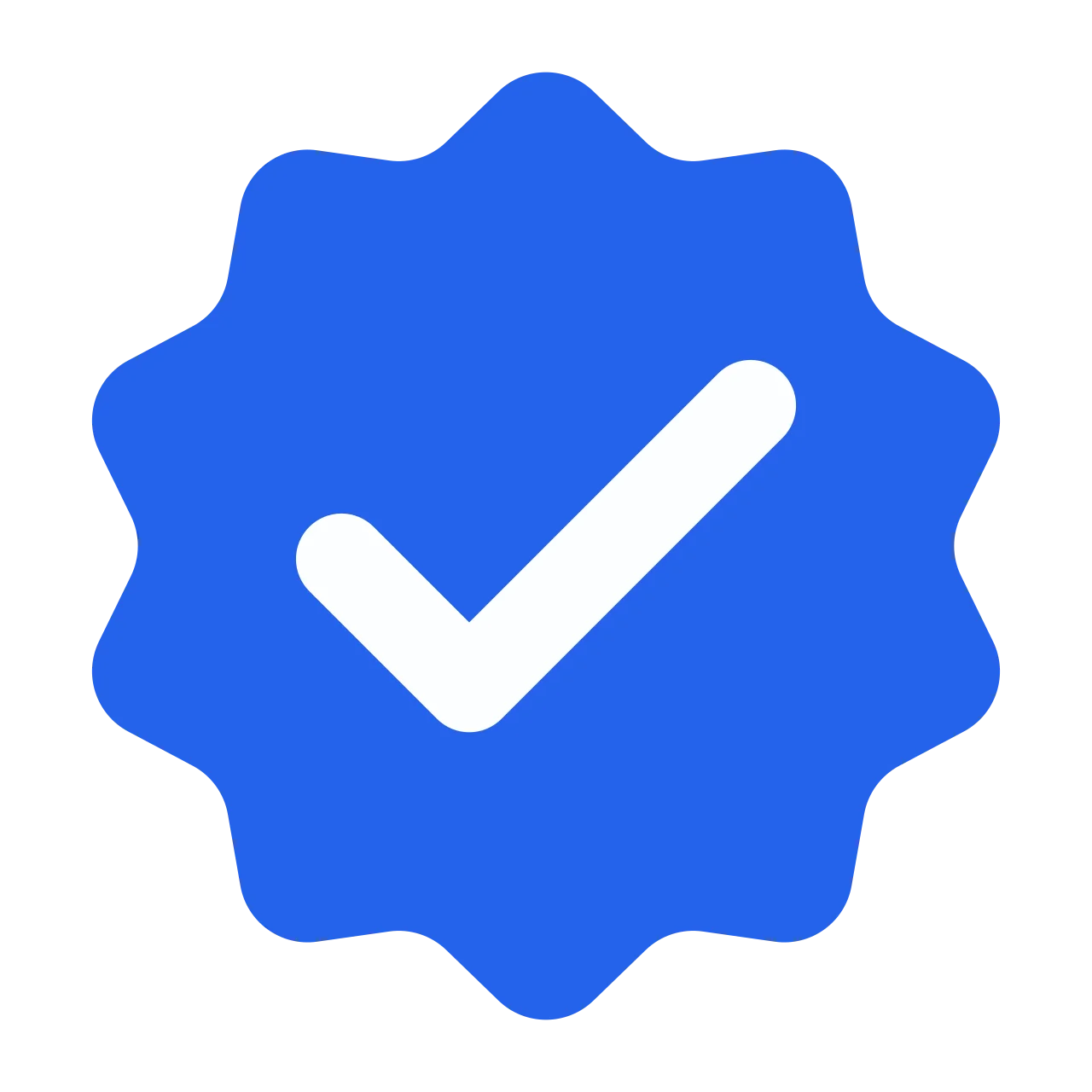
Facts Checked by Josip Putarek

 Fact checked by
Fact checked by 

 v.hatze@yahoo.com
v.hatze@yahoo.com 